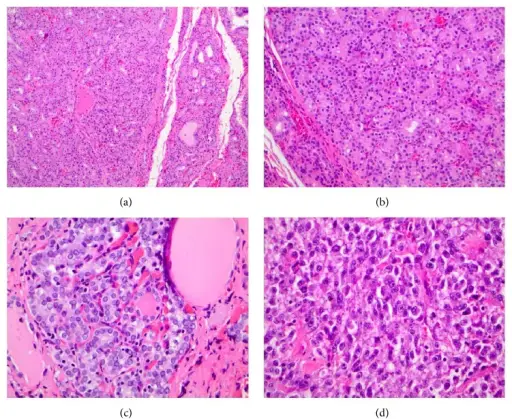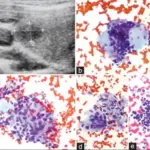Graves disease is an autoimmune disease due to autoantibodies to thyroid proteins that cause hyperthyroidism.
What is the Pathology of Graves Disease?
The pathology of Graves disease is:
-Etiology: The cause of Graves disease is a malfunction of the immune system.
Genes involved: None.
-Pathogenesis: The sequence of events that lead to graves’ disease involves the production of IgG autoantibodies directed against the thyrotropin receptor, which is called the thyroid stimulating immunoglobulin.
-Histology: The histology associated with Graves’ disease shows hyperplastic thyroid follicles with papillary infoldings while the nuclei are round.
How does Graves Disease Present?
Patients with graves’ disease typically present in middle age women present at the age range of 35-45. The symptoms, features, and clinical findings associated with graves’ disease include enlarged thyroid, muscle weakness, tremors, sweating, and heat intolerance. Exopthalmos may be present as well, which is a characteristic bulging of the eyes.
How is Graves Disease Diagnosed?
Graves disease is diagnosed clinically by symptoms, presence of laboratory markers of hyperthyroidism, ophthalmopathy, and presence of serum anti thyrotropin antibodies.
How is Graves Disease Treated?
Graves’ disease is treated with Beta-blockers.
What is the Prognosis of Graves Disease?
The prognosis of the disease is fair. The signs and symptoms of Graves ophthalmopathy usually become stable for a year or so and then begin to get better, often on their own.



